Elastic Beanstalk
Overview
AWS Elastic Beanstalk is a fully managed orchestration solution that synchronizes several AWS services, including EC2, S3, Simple Notification Service (SNS), CloudWatch, autoscaling, and Elastic Load Balancers. It handles the deployment and scalability of web applications automatically; the user only needs to upload the application and it does the rest.
What is Elastic Beanstalk in AWS?
Elastic Beanstalk enables rapid deployment and management of apps on the AWS Cloud without the need to learn about the infrastructure that supports those applications.
Elastic Beanstalk simplifies management without limiting choice or control. Simply upload your application, and Elastic Beanstalk will manage capacity provisioning, load balancing, scaling, and application health monitoring for you.
Elastic Beanstalk supports Go, Java,.NET, Node.js, PHP, Python, and Ruby applications. Elastic Beanstalk creates the specified supported platform version and allocates one or more AWS resources, such as Amazon EC2 instances, to run your application when you deploy it.
How Does Elastic Beanstalk Work?
To utilize Elastic Beanstalk, build an application, upload an application version in the form of an application source bundle (for example, a Java. war file), and then supply some application details.
Elastic Beanstalk establishes an environment for you and creates and configures the AWS resources required to run your code.
After your environment has been launched, you may manage it and deploy new application versions.
The workflow of Elastic Beanstalk is depicted in the diagram below.
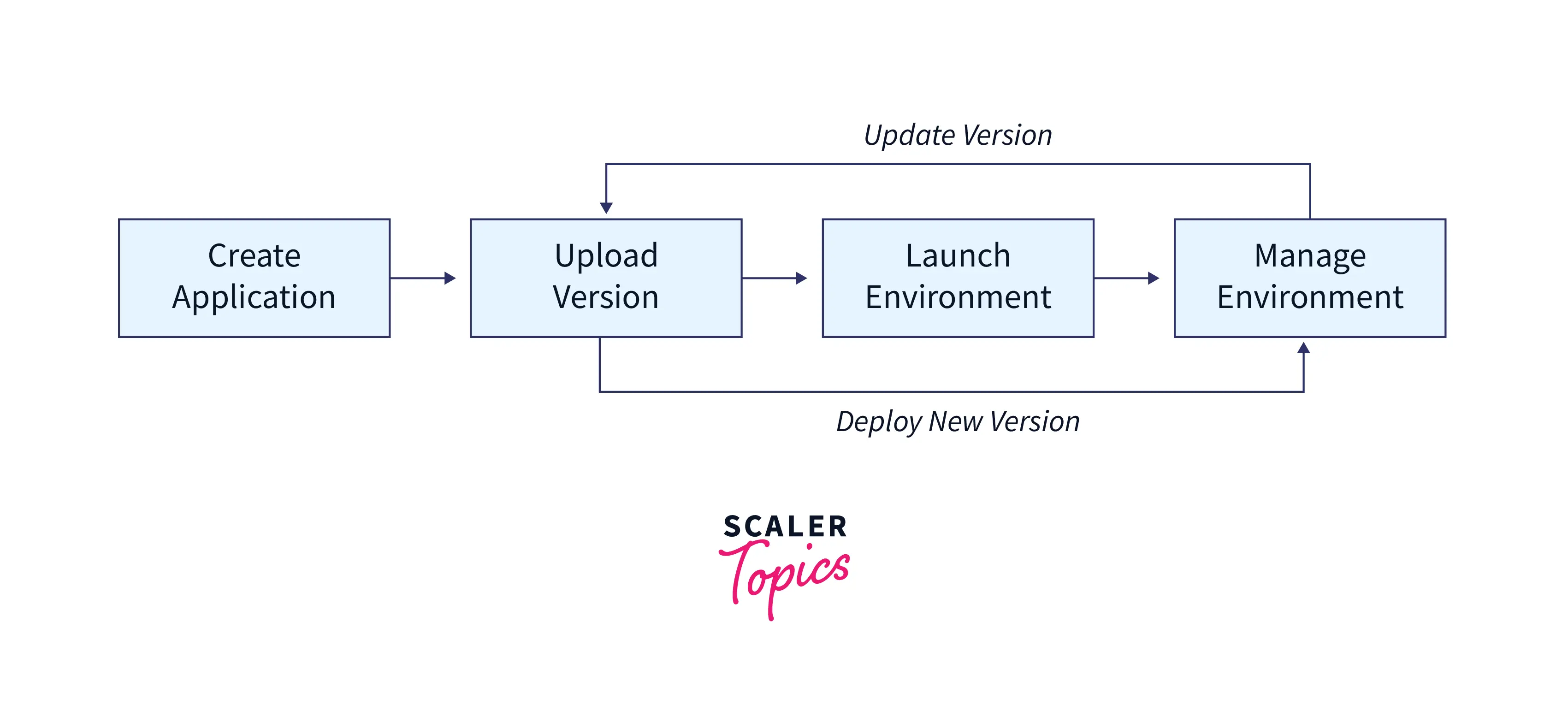
After you create and deploy your application, you may access information about it, such as metrics, events, and environment status, using the Elastic Beanstalk interface, APIs, or Command Line Interfaces, such as the unified AWS CLI.
Features of Elastic Beanstalk
Diverse range of application platforms
AWS Elastic Beanstalk supports web applications developed in many popular programming languages and frameworks. Java,.NET, Node.js, PHP, Ruby, Python, Go, and Docker is development options for delivering your web apps.
Various possibilities for application deployment
You may deploy code to AWS Elastic Beanstalk using the AWS Management Console, the Elastic Beanstalk Command Line Interface, Visual Studio, or Eclipse.
Multiple deployment policies all at once, rolling with an additional batch, immutable, and blue/green provide options for delivering your apps quickly and safely while decreasing administrative load.
Monitoring
Elastic Beanstalk provides a consistent user interface (UI) to monitor and control your applications' health.
Tracing, Logging, and Monitoring:
Elastic Beanstalk is integrated with Amazon CloudWatch and AWS X-Ray, so you can observe critical performance data like latency, CPU utilization, and response codes using monitoring dashboards.
Management and updates
Using managed platform updates, you may opt to automatically receive the newest platform versions and fixes for your Elastic Beanstalk installation.
Scaling
Elastic Load Balancing and Auto Scaling are used by Elastic Beanstalk to automatically scale your application in and out based on individual demands. You may increase application dependability and availability by deploying several availability zones.
Customization
Elastic Beanstalk allows you to choose the best AWS resources for your application, such as Amazon EC2 instance types, including Spot instances. You also retain complete control over the AWS resources used to power your application.
Compliance
Elastic Beanstalk satisfies the ISO, PCI, SOC 1, SOC 2, and SOC 3 compliance standards and HIPAA eligibility criteria. Elastic Beanstalk apps can process regulated financial data or protected health information (PHI).
AWS Graviton support
AWS Graviton arm64-based processors provide the greatest price performance for your Amazon EC2 cloud workloads. You may choose EC2 instance types to satisfy the optimization demands of your applications using AWS Graviton on Elastic Beanstalk.
Components of Elastic Beanstalk
Application
Elastic Beanstalk applications are logical groups of Elastic Beanstalk components such as environments, versions, and environment settings. In Elastic Beanstalk, an application is effectively the same as a folder.
Application Version
An application version in Elastic Beanstalk refers to a specific, tagged iteration of deployable code for a web application.
A version of an application links to an Amazon Simple Storage Service (Amazon S3) object containing deployable code, such as a Java WAR file. An application version is a component of a larger application. Applications can have several versions, and each version is distinct. In a running environment, you can deploy any application version previously submitted to the application or upload and deploy a new version immediately.
Environment
An environment is a set of AWS resources executing a certain application version. Each environment can only execute one application version simultaneously; however, you can run the same or different application versions in several environments simultaneously. Elastic Beanstalk provisioned the resources required to run the application version you selected when you created an environment.
Environment Tier
When starting an Elastic Beanstalk environment, you must select an environment tier. The environment tier specifies the application running in the environment and the resources Elastic Beanstalk provides to support it. A web server environment layer hosts an application that serves HTTP requests. A worker environment tier hosts a backend environment that pulls jobs from an Amazon Simple Queue Service (Amazon SQS) queue.
Environment Configuration
An environment configuration specifies parameters and settings that dictate how an environment and its related resources operate.
When you alter the configuration parameters of an environment, Elastic Beanstalk automatically applies the changes to existing resources or deletes and deploys new resources (depending on the type of change).
Saved Configuration
A stored configuration is a template that may use to create unique environment setups. You may use the Elastic Beanstalk interface, EB CLI, AWS CLI, or API to build and change stored settings and apply them to environments.
Platform
A platform is a collection of components that includes an operating system, a programming language runtime, a web server, an application server, and Elastic Beanstalk. You develop a platform and choose a target for your web application. Elastic Beanstalk provides several platforms on which to develop your apps.
Elastic Beanstalk Commands
The following is a collection of commands for administering the AWS Elastic Beanstalk service:
- abort-environment-update
- apply-environment-managed-action
- check-DNS-availability
- compose-environments
- create-application
- create-application-version
- create-configuration-template
- create-environment
- create-platform-version
- create-storage-location
- delete-application
- delete-application-version
- delete-configuration-template
- delete-environment-configuration
- delete-platform-version
- describe-account-attributes
- describe-application-versions
- describe-applications
- describe-configuration-options
- describe-configuration-settings
- describe-environment-health
- describe-environment-managed-action-history
- describe-environment-managed-actions
- describe-environment-resources
- describe-environments
- describe-events
- describe-instances-health
- describe-platform-version
- list-available-solution-stacks
- list-platform-branches
- list-platform-versions
- list-tags-for-resource
- rebuild-environment
- request-environment-info
- restart-app-server
- retrieve-environment-info
- swap-environment-names
- terminate-environment
- update-application
- update-application-resource-lifecycle
- update-application-version
- update-configuration-template
- update-environment
- update-tags-for-resource
- validate-configuration-settings
Elastic Beanstalk Web Server Architecture
The figure shows an example of Elastic Beanstalk architecture for a web server environment layer and how the components in that environment tier interact.
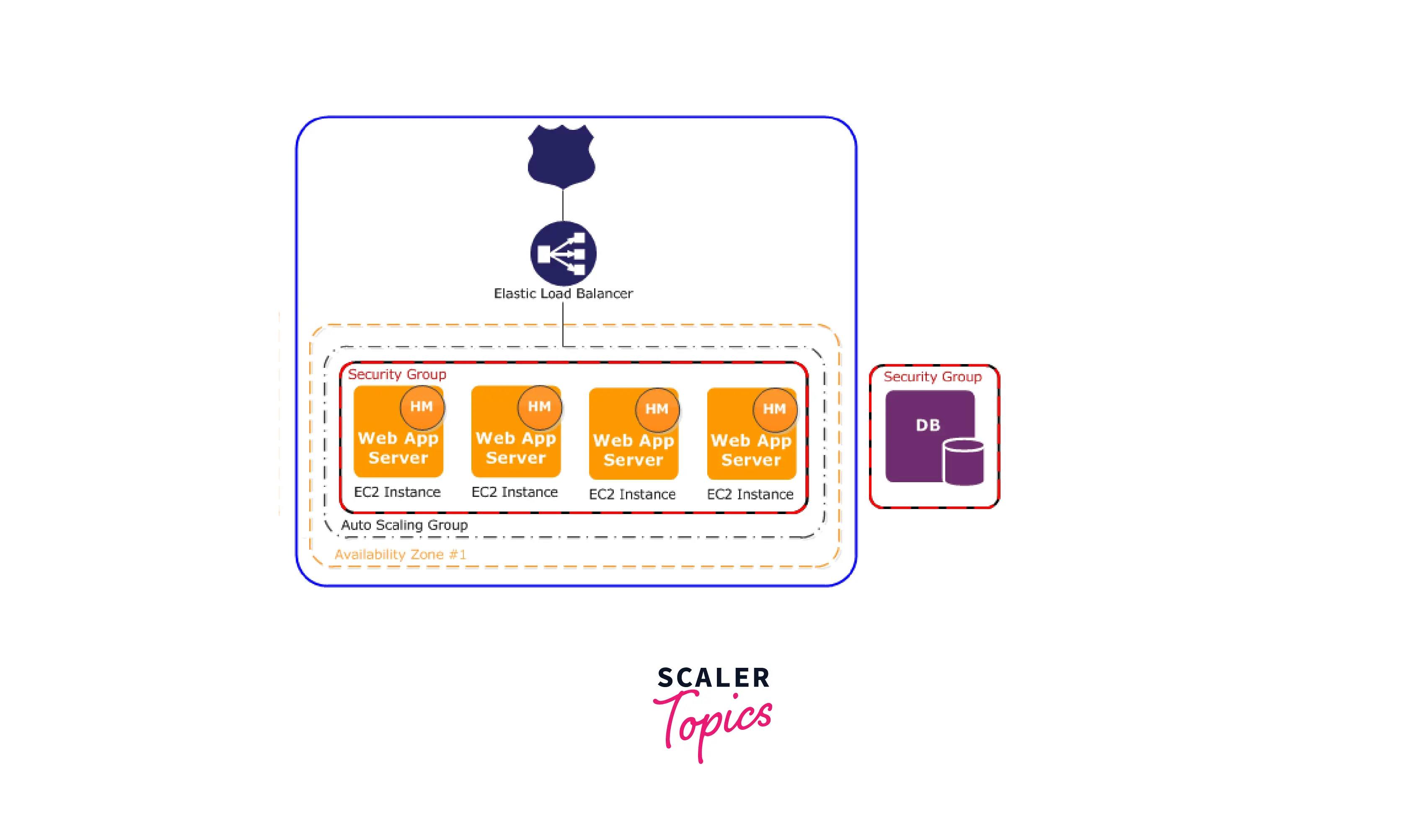
The application's heart is the environment. The top-level solid line in the figure represents the environment.
Elastic Beanstalk provides the resources needed to execute your application when you build an environment.
One elastic load balancer (ELB in the diagram), an Auto Scaling group, and one or more Amazon Elastic Compute Cloud (Amazon EC2) instances are among the AWS resources generated for an environment.
Elastic Beanstalk Worker Environment
An Auto Scaling group, one or more Amazon EC2 instances, and an IAM role are examples of AWS resources provisioned for a worker environment tier.
If you don't already have an Amazon SQS queue, Elastic Beanstalk generates and configures one for the worker environment tier. Elastic Beanstalk installs the required support files for your programming language of choice and a daemon on each EC2 instance in the Auto Scaling group when you establish a worker environment.
The daemon delivers data from each message it reads to the working environment's web application for processing. If you have several instances in your working environment, each has its daemon, but they all read from the same Amazon SQS queue.
The figure below depicts the various components and their interconnections between environments and AWS services.
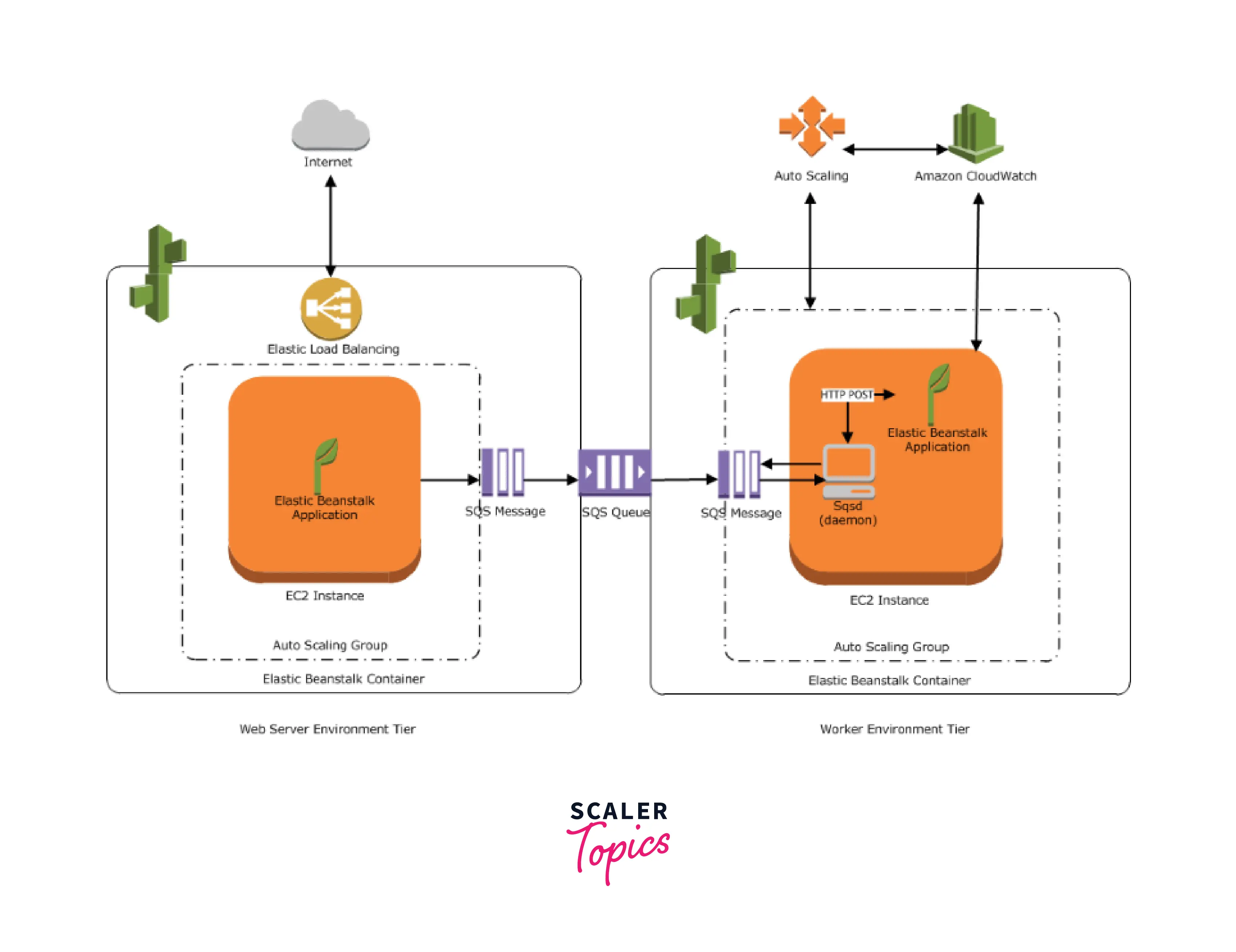
Elastic Beanstalk Extensions
You may add AWS Elastic Beanstalk configuration files (.ebextensions) to your web application's source code to define your environment and personalize its AWS resources.
Customization includes defining installation packages, creating Linux users and groups, performing shell commands, specifying services to enable, setting a load balancer, and so on.
Configuration files are YAML or JSON-formatted documents with a .config file extension that you store in a folder called .ebextensions and publish in your application source bundle.
The .ebextensions folder must include in the top-level directory of your application source code bundle. All of the parameters set in the UI may be adjusted in the code.
Requirements:
- It must be in the .ebextensions/ directory of the source code.
- YAML or JSON formats are supported.
- .config extensions may be used (e.g. logging.config).
- Using "Option Settings" you can change the default settings.
- You may include resources like RDS, ElastiCache, and DynamoDB.
If the environment is ended, the resources handled by .ebextensions are removed.
Benefits of Elastic Beanstalk
Simple to begin with
Uploading your application to Elastic Beanstalk is the fastest and easiest method to keep it running. You do not need to be concerned about the platform of your application. You build it on your local system and upload it.
Options for autoscaling
Beanstalk handles scaling up and scaling down as needed. Beanstalk automatically adjusts your application as its traffic grows or drops.
Productivity of developers
Developers don't need to worry about posting their programs online. Instead, they should focus on making their applications safer and more user-friendly.
Customization
AWS Elastic Beanstalk allows you to configure the AWS services you've utilized with your application. You can modify the AWS EC2 instance kinds that are best for your application. You may also adjust the settings if you want to manually take control of specific services.
Cost-Effective
Creating a Beanstalk environment is free of cost. You might make your application larger when there is a requirement to get it into the application's production.
Updates and Management
You do not need to worry about upgrading your application in response to platform changes. AWS specialists handle software patches, platform upgrades, and infrastructure maintenance.
Creating an Elastic Beanstalk Application
Step 1: Log in to the AWS management console and click on the Elastic Beanstalk service under the services dropdown.
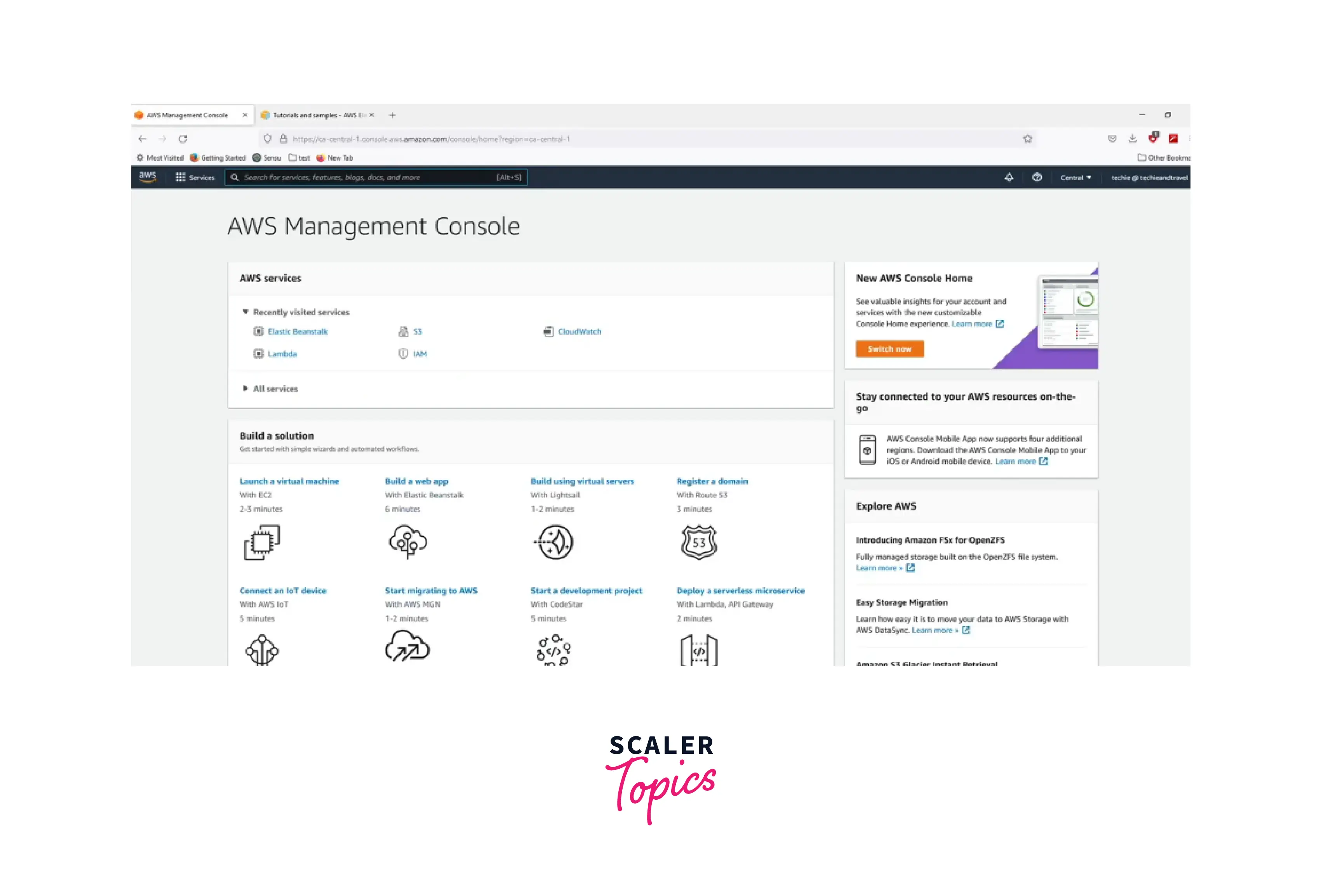
Step 2: Now, click on "Create Application" on the homepage of elastic Beanstalk.
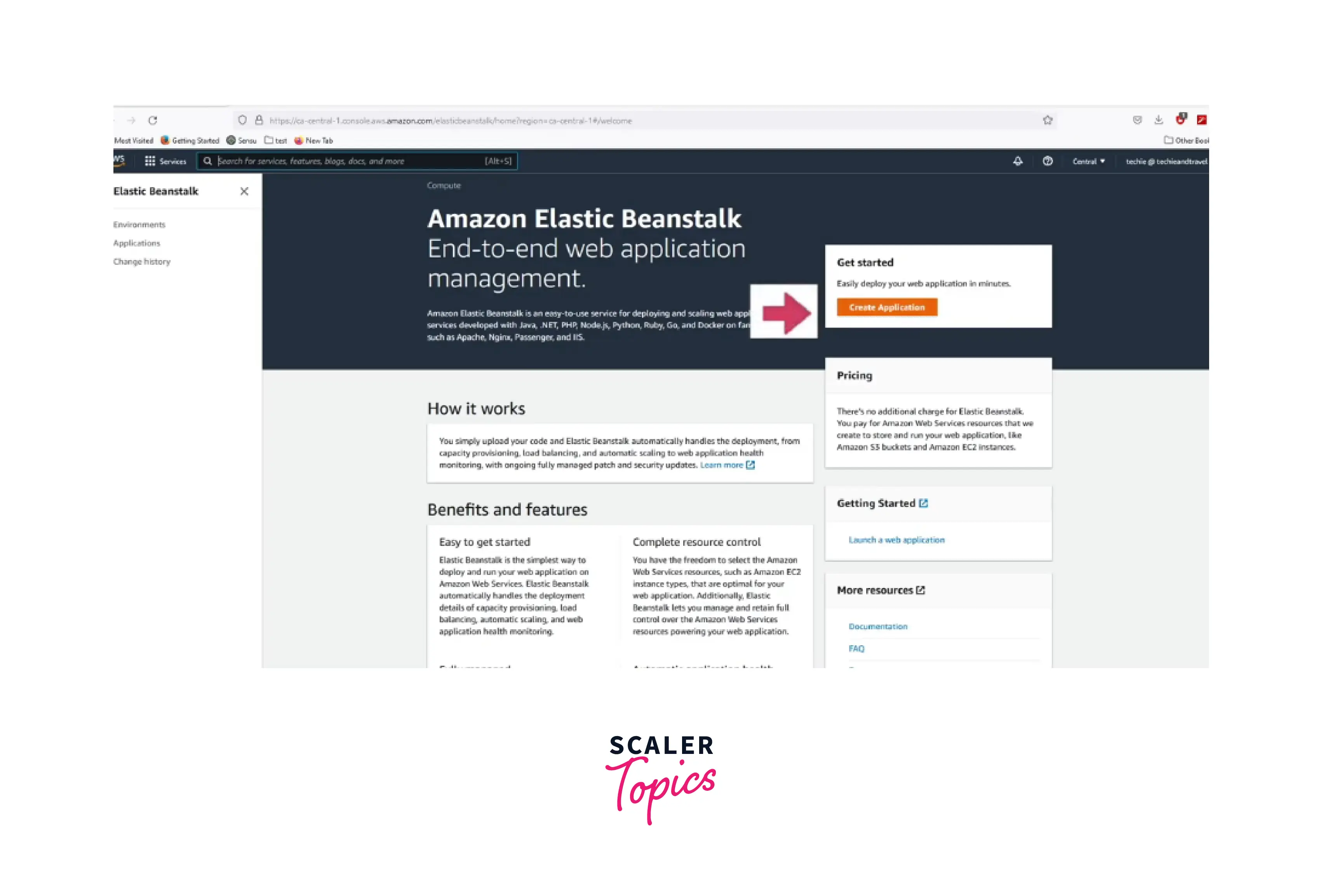
Step 3: Now, provide a sample name for the application.
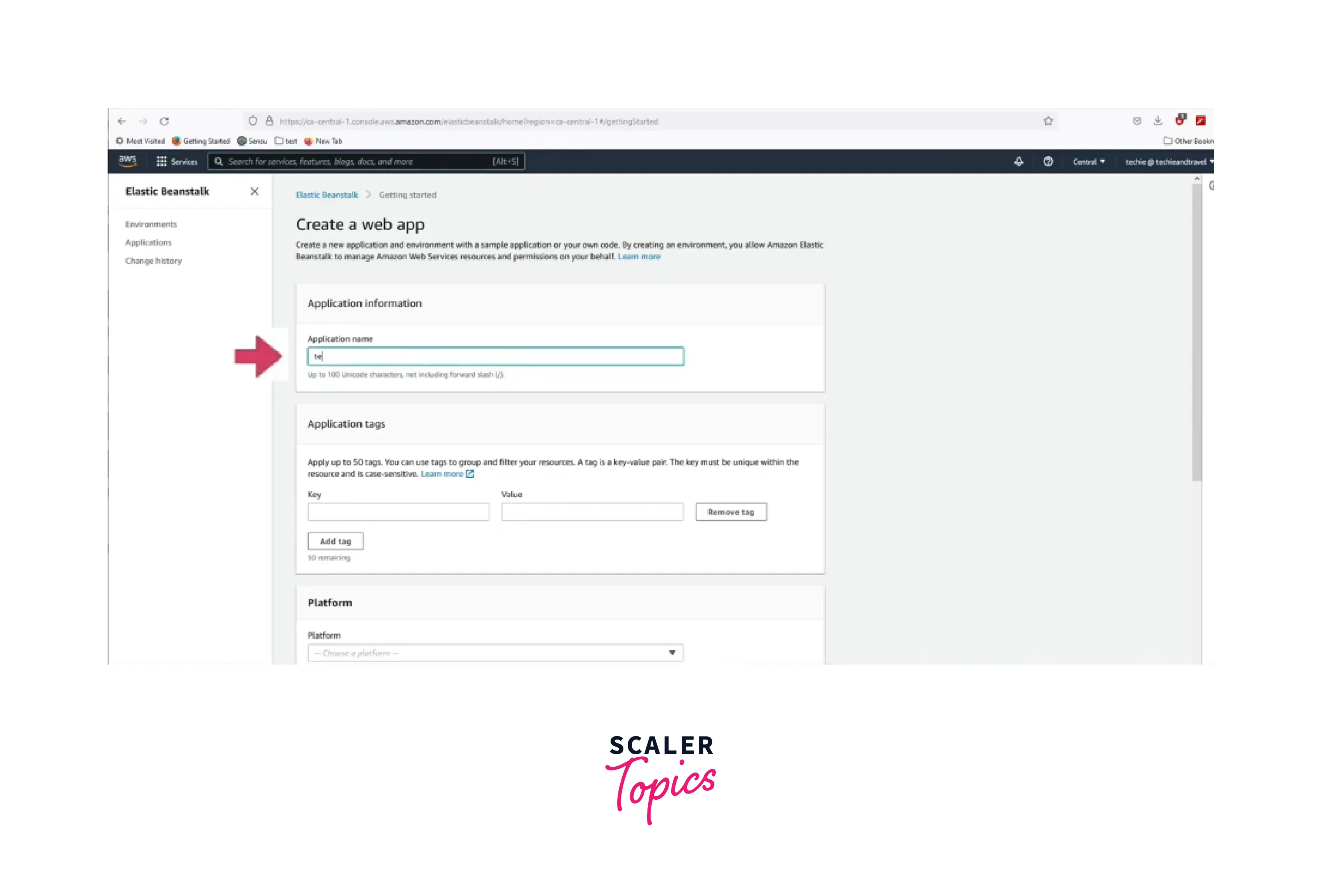
Step 4: You can select the appropriate language under the platform section after scrolling down.
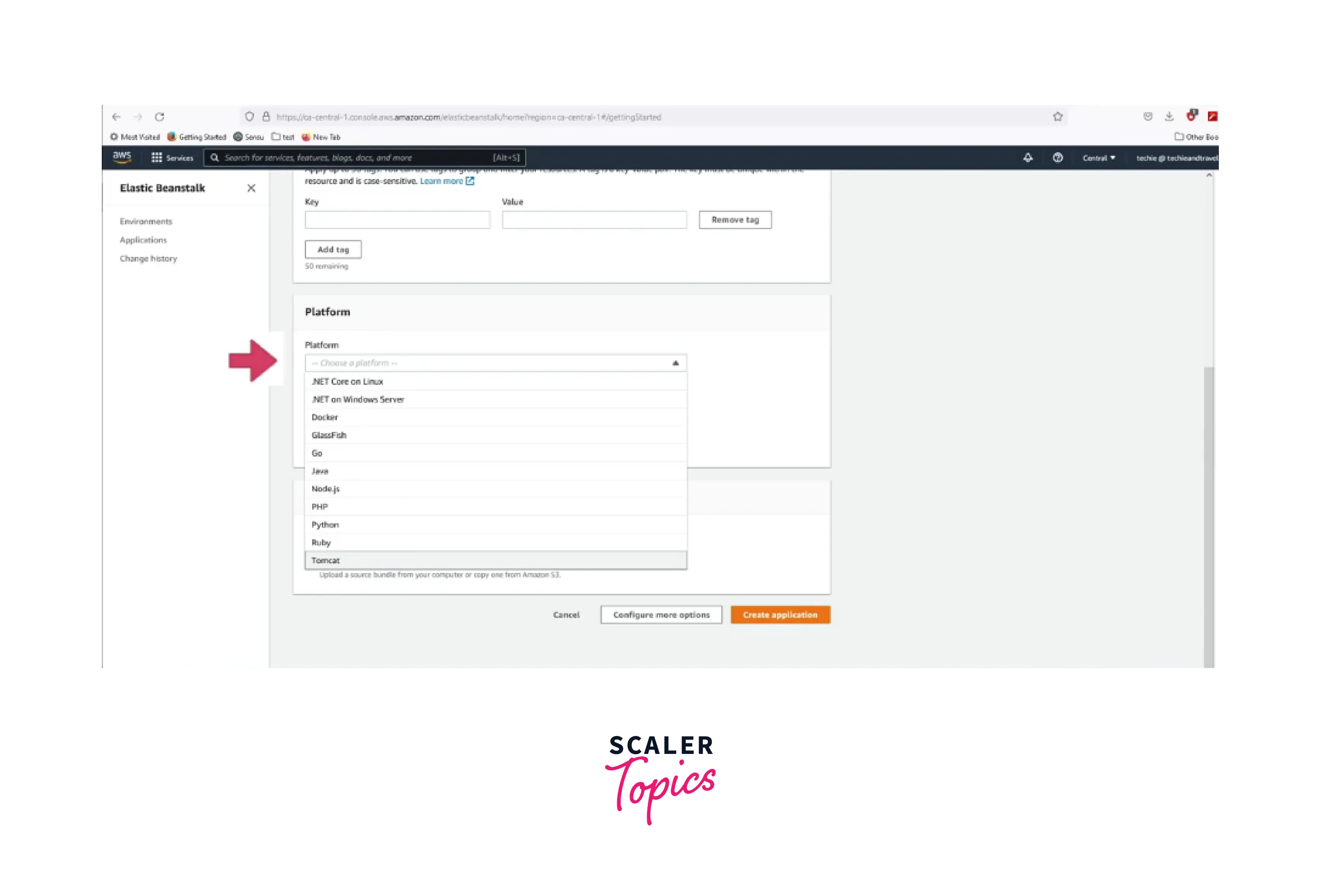
Step 5: Select the sample application under the code for testing purposes.
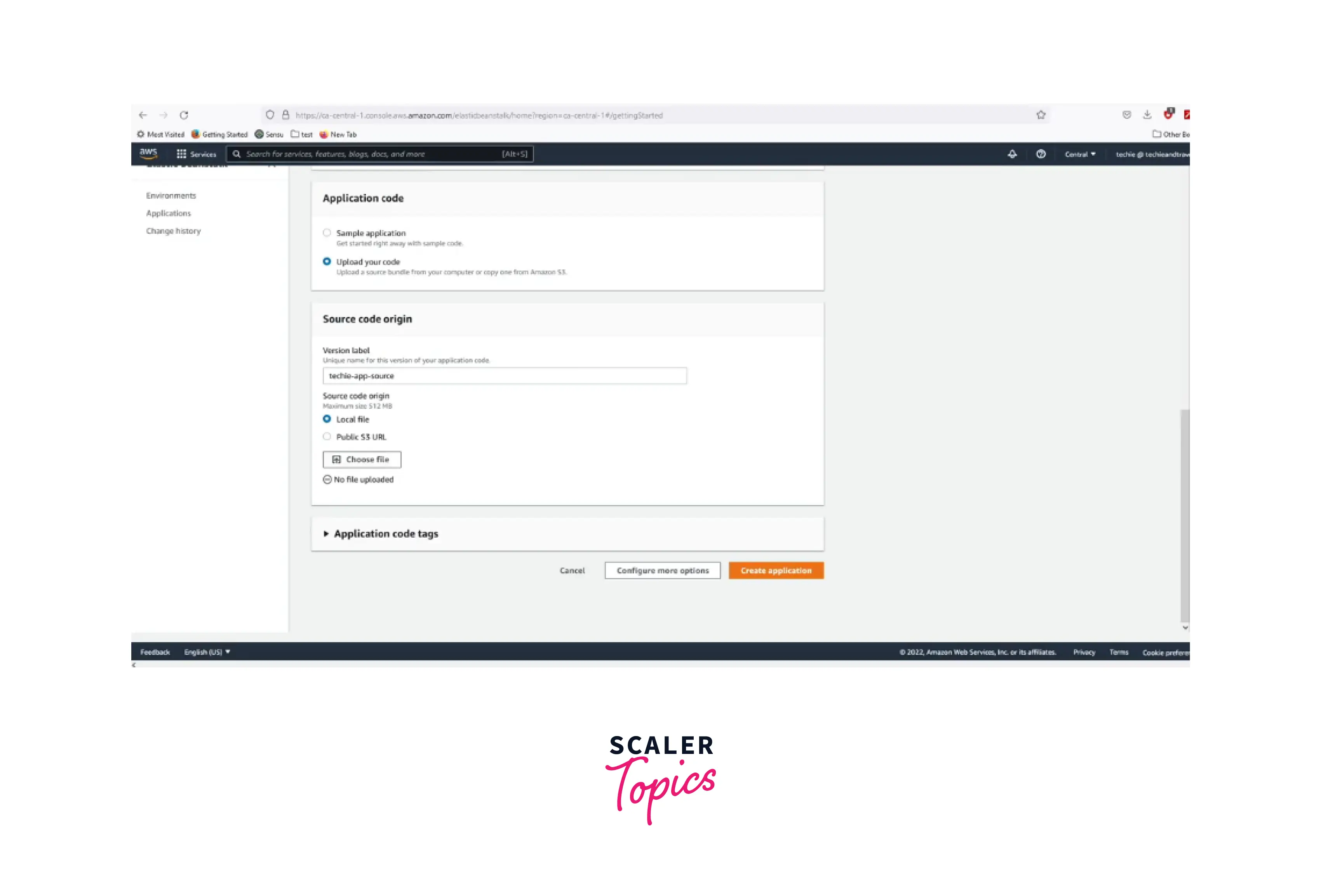
Step 6: Now, you can select "Configuration more options" in the right below a corner.
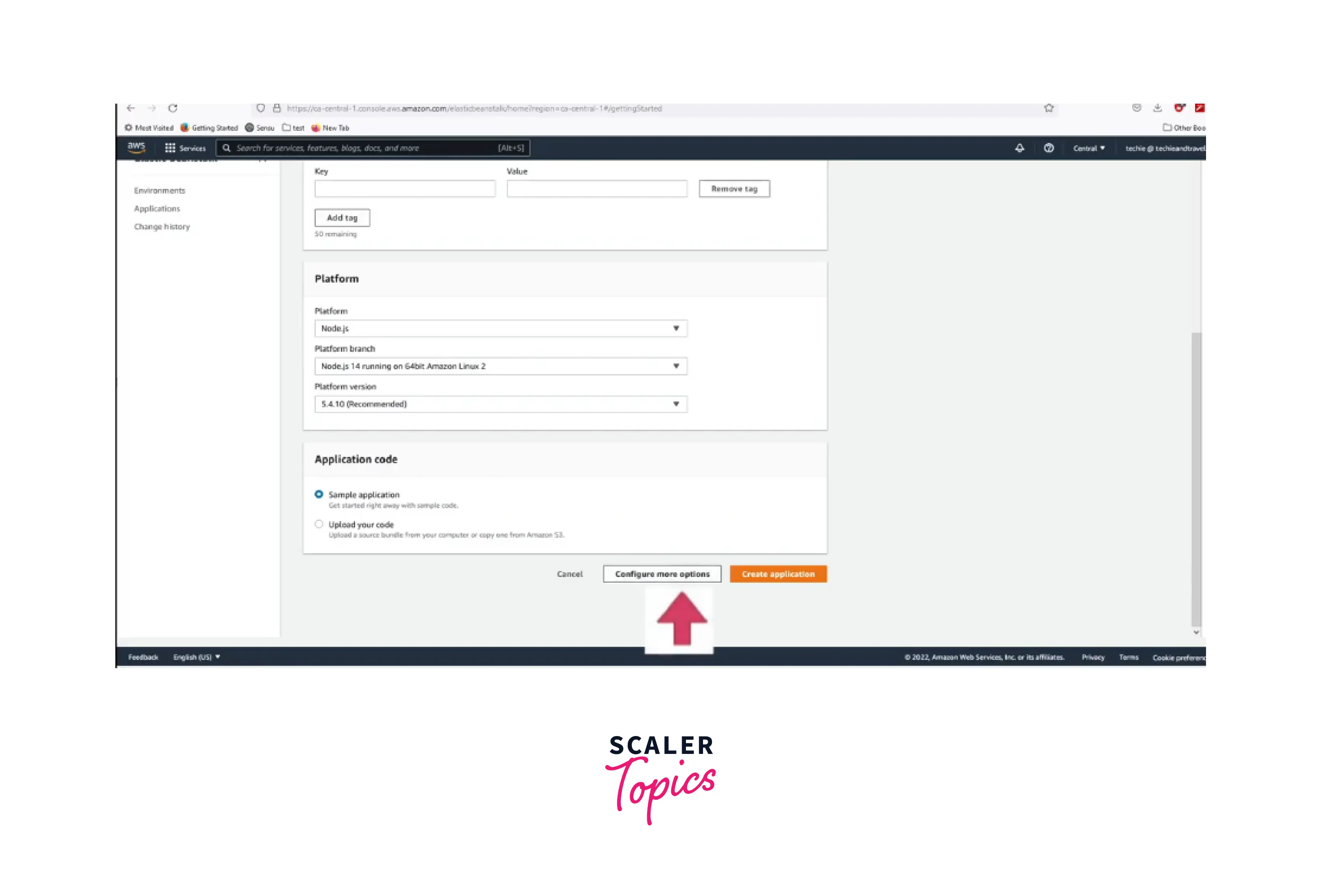
Step 7: After choosing the appropriate configuration details for the application, click on "Create app." Then, Elastic Beanstalk will create an environment for your application.
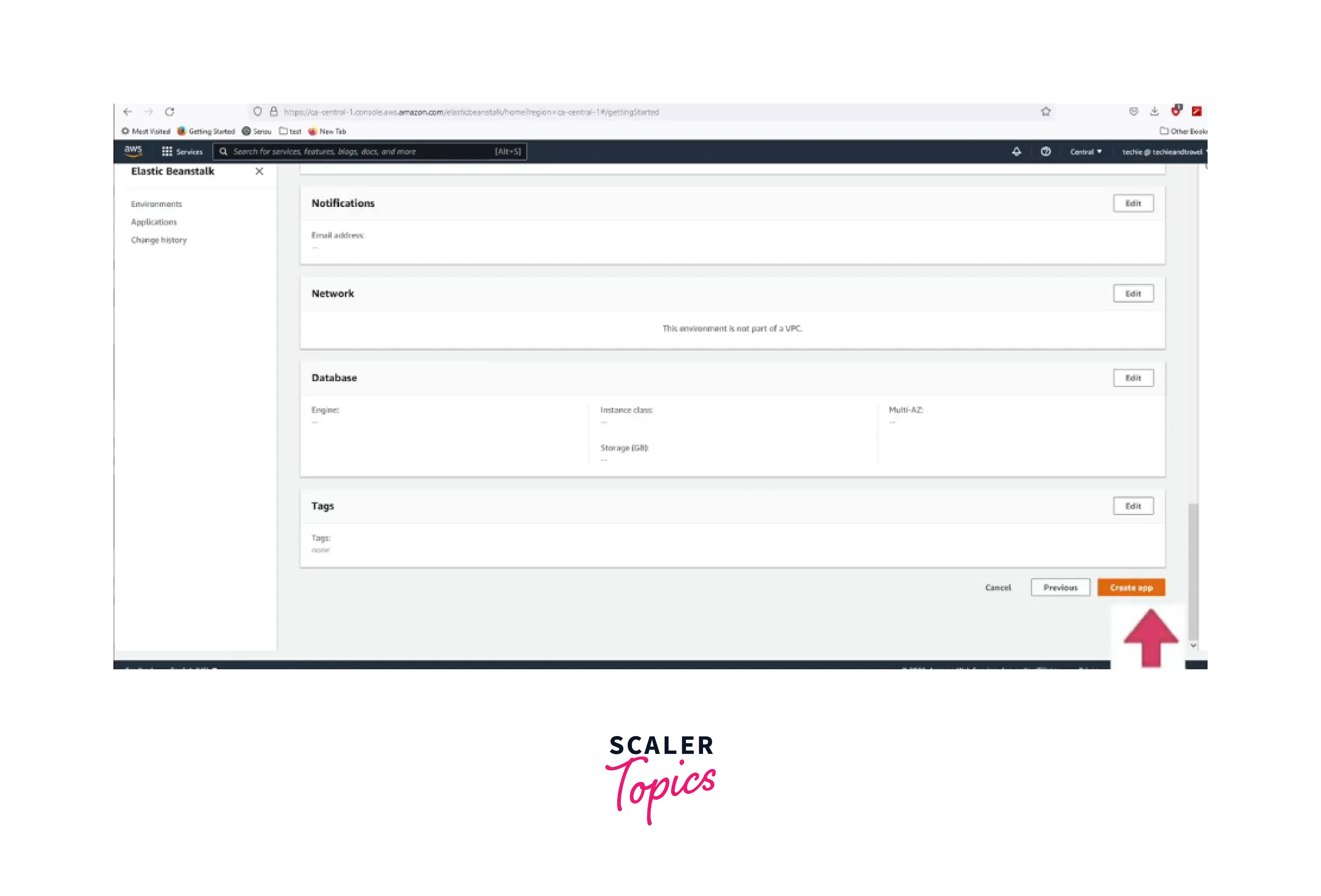
Step 8: AWS provides the URL of the sample application, which can access as :
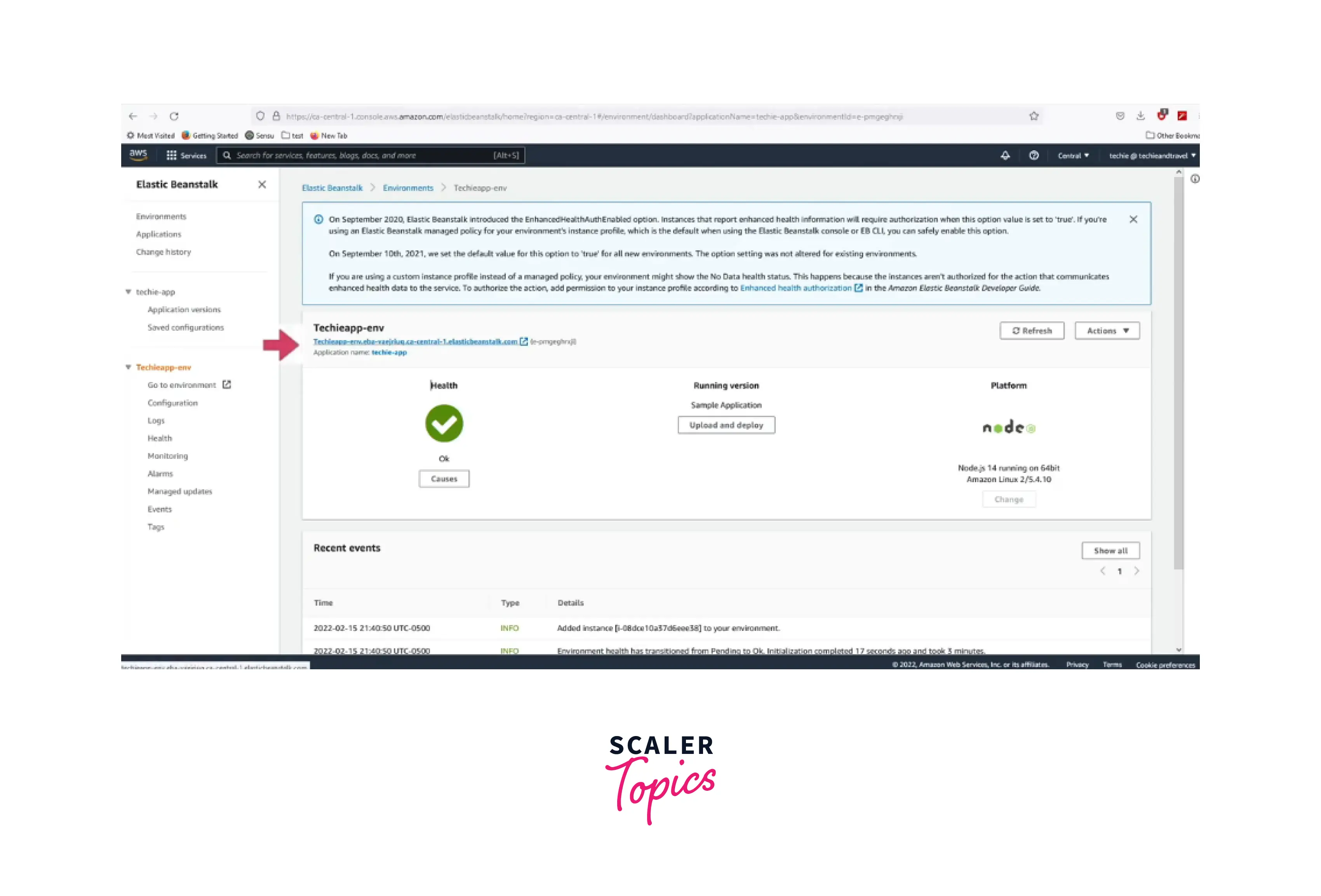
The sample application is shown as follows:
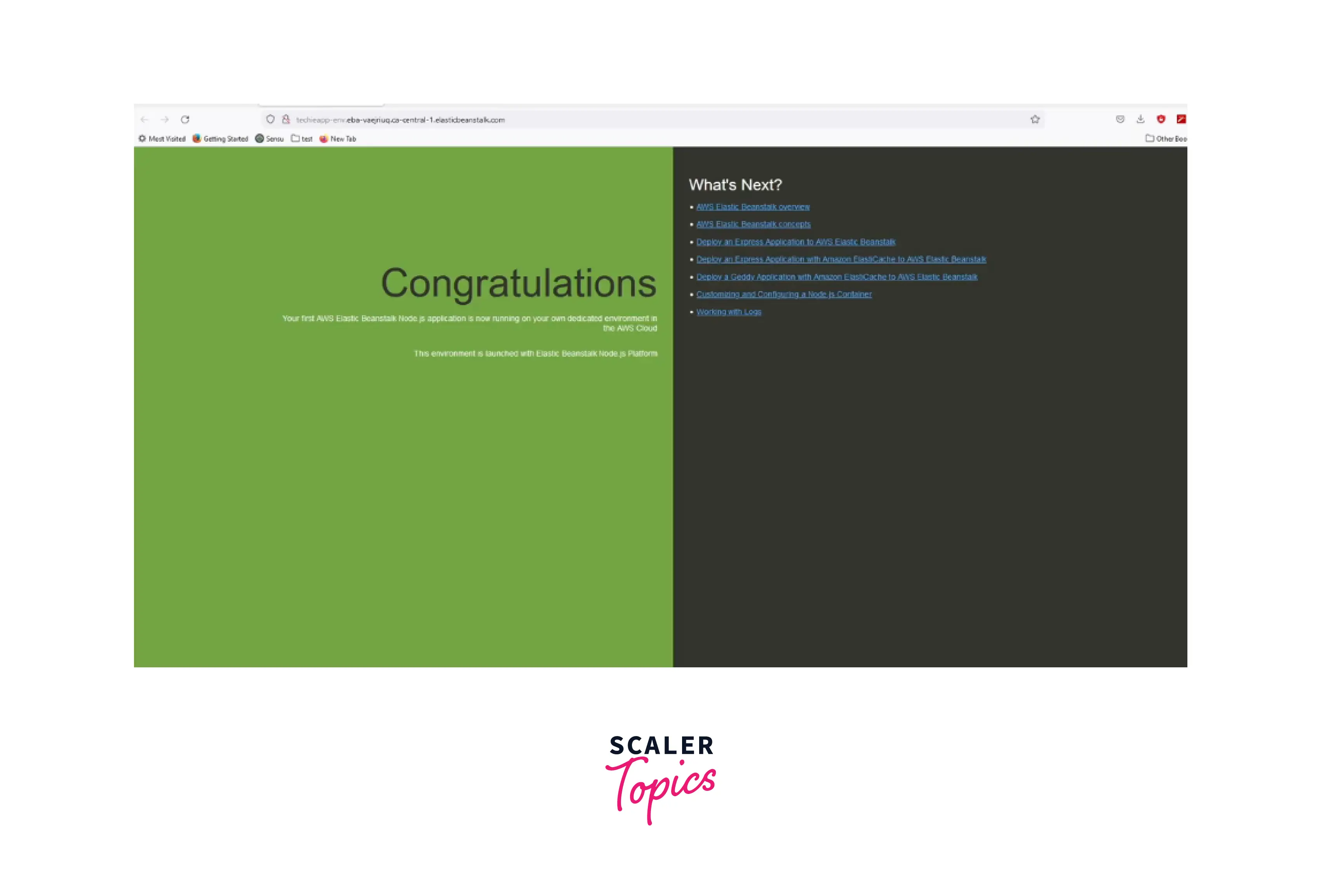
Conclusion
-
AWS Elastic Beanstalk provides developers with an easy and fast way to deploy and manage the application without having to worry about the backend infrastructure.
-
User can solely focus on application code and logic, which makes the deployment process faster and simpler.
-
AWS Beanstalk does not charge any extra cost, so you only pay for the AWS resources you use.
-
Using Elastic Beanstalk developer retains full control over AWS services.
